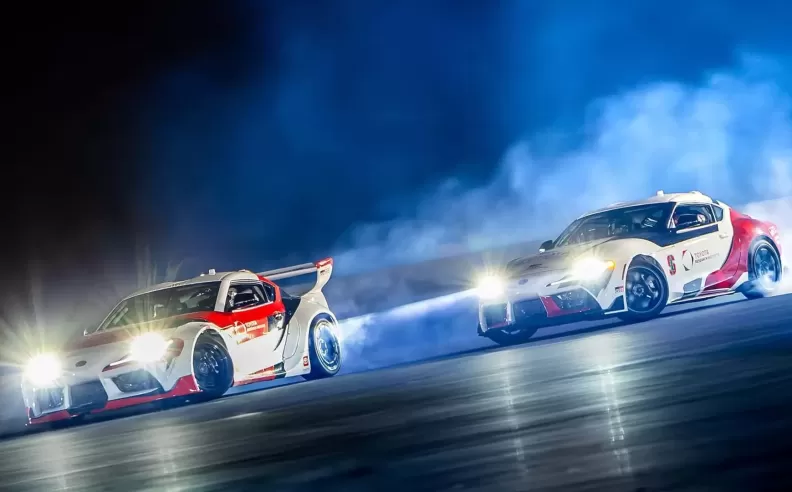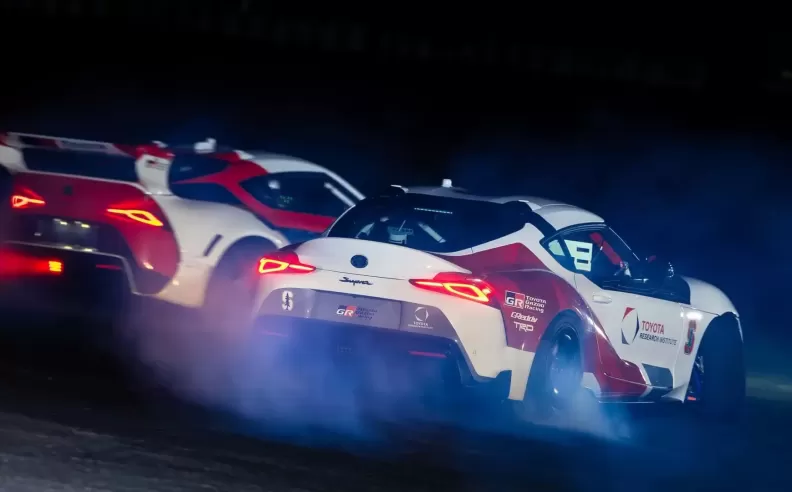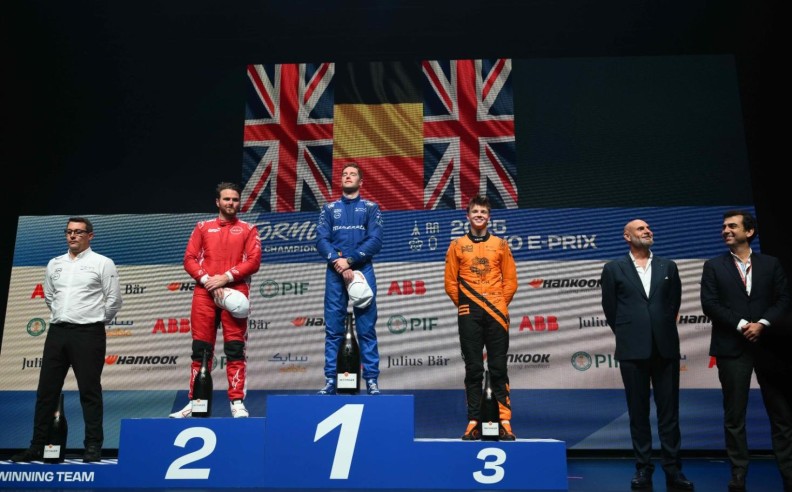
Imagine a world where your car can handle itself in a skid or slide just as skillfully as a professional drifter. This vision is becoming a reality thanks to groundbreaking work by Toyota Research Institute (TRI) and Stanford Engineering. The recent successful tandem drifting of two autonomous Toyota Supras isn't a precursor to a new racing series but a significant leap toward enhancing vehicle safety through advanced crash avoidance systems.

The project saw two Supras equipped with sophisticated computers and sensors capable of controlling the steering, throttle, and brakes independently. Each car was programmed differently: TRI developed the lead car's ability to drift along a pre-determined path, while Stanford engineered the chase car to dynamically adapt to the lead vehicle, maintaining a synchronized drift without collision.
Avinash Balachandran, vice president of TRI's Human Interactive Driving division, explained, "This new technology can kick in precisely in time to safeguard a driver and manage a loss of control, just as an expert drifter would."
Most drivers lack the training to recover a skidding or sliding car safely. With only a split second to react, even experienced drivers can find themselves in dangerous situations. The autonomous drift system aims to bridge this gap by taking over control during critical moments, potentially saving lives by preventing accidents caused by loss of control.
While the sight of autonomous cars drifting in tandem is undoubtedly thrilling, the real-world applications are even more exciting. Researchers are using insights from this project to develop new methods of vehicle control, particularly in challenging conditions like driving on ice. This technology could revolutionize how cars handle adverse conditions, making everyday driving safer for everyone.
Modern vehicles are already equipped with numerous safety features that make them more aware and reactive to their surroundings than ever before. However, these systems are not infallible. Toyota and Stanford's innovative work with autonomous drifting cars addresses some of the existing limitations, paving the way for more robust crash avoidance systems.
We're still a few years away from fully autonomous vehicles dominating the roads, but advancements like these bring us closer to that future. By integrating pro-level drifting skills into autonomous systems, Toyota and Stanford are not just pushing the boundaries of automotive technology—they're also making significant strides toward reducing traffic accidents and enhancing overall road safety.
The collaboration between Toyota Research Institute and Stanford Engineering showcases how cutting-edge technology can make driving safer. The ability of autonomous systems to handle complex maneuvers like drifting could be a game-changer in vehicle safety, providing drivers with an added layer of protection during critical moments. As researchers continue to refine these systems, the future of driving looks not only more advanced but also significantly safer.

Wael is an automotive content writer specializes in creating written content for Motor 283. Producing a wide range of content, including blog posts, articles, product descriptions, reviews, and technical guides related to cars, trucks, motorcycles, and other vehicles, with an unprecedented passion for cars, and motorcycles.

